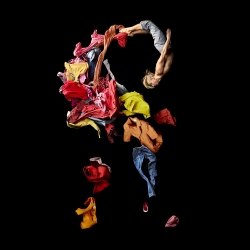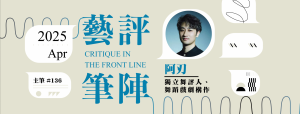 |
As part of the World Cultures Festival featuring the Nordics this year, renowned Swedish contemporary circus company Cirkus Cirkör presented their crowd-pleasing flagship: Limits.
Conceived in 2015, Limits displays the virtuosity of the company, while tackling the issue of human migration—one of the most universal conundrums facing humanity since the Anthropocene.
The past decade has seen a surge of asylum seekers and economic migrants arriving in Europe in search of a better life and to escape from war and violence. Thus, this relatively stable and well-off continent is forced to wrestle with the problem head-on, and from which two main discourses have arisen: one that welcomes them, and one that shuts them out. Undoubtedly, Cirkus Cirkör belongs to the former, as most artists and performers would. After all, art is inherently about breaking boundaries, and it has a universally-acknowledged manifesto: The sky’s the limit.
This liberal point of view, that of opening up borders for the refugees and reclaiming their voices, is being promulgated in all art forms, from theatre to film to visual art. Renowned works like Kevin Rittberger’s Cassandra or The World as the End of the Presentation, Gianfranco Rosi’s Fire at Sea, and in a more metaphorical sense, Akram Khan’s Giselle, take audiences and spectators on the odyssey of the migrants, and urge us to rethink the meaning of borders. Limits is no exception. Coupling traditional circus acts with video projections, live music, and monologues, the show hammers home the message that borders are against our innate tendency to move and achieve balance.
A Balancing Act
Limits begins with the video projection of the sea with a bridge stretching across the horizon. We hear the sound of waves and the distant chirping of seabirds, and a female voice pensively says, “I couldn’t imagine how there can be a border in something that is constantly moving.” The monologue sets in motion the canvas on which the projection is cast. It is elevated towards the ceiling to become the undulating surface of the sea, and from it a female performer descends on a rope, suggesting she is drowning; she and another performer take turns to be pulled up and down, oscillating between submersion and salvation. To provide some context to the stunt, they get the statistics of the number of people getting drowned while trying to reach the European continent by sea.
This mode of storytelling, a coupling of stunts and texts, persists throughout the entire show. With a runtime of over 2 hours, Limits offers the spectacles of aerial acrobatics, trampolining, cyr wheel and teeterboard stunts, juggling, etc., all of which are standard acts of a circus show. On the other hand, the artistic director Tilde Björfors intersperses the stunts with personal stories of refugees and reflections on the act of boundary-crossing, as well as some general facts related to this global crisis.
In one remarkable segment, a male performer does handstands on some movable slabs of wood, as other performers work below him to hold the bars steady, changing the bars’ positions from time to time to pave the way for his next move. Meanwhile, we see the projection of a counter, indicating how many people are forced to leave their homes every second as the stunt takes place—an alarming 150 when the stunt ends.
In another segment, another male performer, acting as the clown and juggler of the show, attempts to solve a Rubik’s cube while blindfolded. Before he performs the trick, he explains the key to pulling it off: He would assign a letter to every coloured surface of the cube, and remember the combinations of letters by associating them with meaningful ideas, such as the names of countries that a migrant would traverse to reach the heart of Europe.
As if the circus acts alone could not tell the story, Tilde Björfors has opted for a pattern of “show-and-tell”—the method of doubling the narrative through physical action and verbal text that is popular in children’s theatre—to make sure the message is communicated to the audience directly and without ambiguity. While they marvel at the virtuosity of the performance, more importantly they also learn something about the world out there. The acts are not intended to divert their attention from the hard truth, but to remind them of it. Musings like “It hurts, which makes you want to try even harder” or “In order to balance, you need to move constantly” not only refer to the nature of the stunts themselves, but also correspond to the struggles and preoccupations of the migrants. While the text offers them a cognitive experience, the sensations and thrills offered by the tossing and jostling of bodies make sure it is also an emotional one.
Björfors has chosen an economical approach to tell her story. By reducing the number of performers to a mere six (five circus artists and one live musician), she is able to give ample space and time to the performers, so that they can exude their bodily presence and individuality on stage. This in turns allows the audience to focus on every single performer and follow their personal adventures. The stage design is relatively minimal and symbolic, stripped of the typical kitsch and flamboyance of traditional circus shows. At the centre is a large hanging platform that can change angles to propose different scenarios to the performers. When erected, it is a wall to jump over; when slanted, a slope on which to suspend; and when levelled, a floating panel that is symbolic of a boat or a makeshift shelter—all of these work together to epitomise a migrant’s odyssey. Meanwhile, with a manoeuvrable DJ set, live musician Samuel “LoopTok” Långbacka, who has also composed his own score, plays an eclectic soundtrack that comprises folk, post-rock, ambient music and nuanced sampling. Live music makes the experience of Limits all the more organic, as all sensations and physicality are being produced right on the spot.
At the end of Limits, a female narrates, “It is time for our European body to start training hard.” The body in question refers, of course, not only to the physicality of the performers, but also the collective body of European citizens who are responsible for negotiating the future of migrants. Strings of clothes dyed red emerge from a fine-art picture frame, reaching out to the audience like the sinews of the body. The performers invite the front rows of the audience to pull them. I doubt anyone from the audience would fail to get the analogy. Limits draws our attention to focus on what we as individual bodies can do in the present, reminding us that the future is in our hands.
After all, as a contemporary circus company, Cirkus Cirkör should find itself in a pretty convenient position when advocating the boundary-crossing idea. It is exactly in this art form that the liberal discourse has found its perfect refuge. The circus is an arena where bodies are being pushed to the limit, to directly confront with external obstacles. Circus artists negotiate their moves on the spot, and are willing to take risks at the expense of potential failure. They embody our perpetual, existentialist quest for freedom as well as our instinct to recognise and overcome boundaries. Limits takes pleasure in this congruence of form and content, giving us a successful balancing act.
Moving Forward... Have They Reached Their Limits?
If Limits is to be judged democratically—that is, according to how many people like them—there is no doubt that it is a successful performance, fusing education and entertainment into a cohesive spectacle. Contemporary circus walks a thin line between art and show business. Cirkus Cirkör is able to straddle both dimensions; it prides itself on doing circus with a heart, which is a lucrative formula, since it is able to manage the expectations of both circus lovers and theatre-goers.
However, given the plethora of works that discuss the refugee crisis, Limits is seen to have its limitations:
- Limits runs the risk of generalisation, when the dialectics is disrupted by scenes of virtuosity. It works for people who had no idea about the refugee crisis, but it is too easy for the more sophisticated theatre-goers who are well-informed of the issue and expect more than a gratification of senses and a simple message.
- The storytelling might feel a little too didactic. It is exactly when Limits is so sure of itself that it ignores the fact that contemporary Europe as an area of contestation of ideologies and belief systems. A decentralised narrative is perhaps required when tackling the “European body”.
- The representation of migrants and refugees does not do them justice. The circus artists are predominantly white, and may not be in the best position to tell the story. The circus bodies are taken as neutral, when they are in fact not so.
- The stunts are still a big part of the show, where technical prowess is being put at the forefront. Through intense institutionalised training, the individual body is honed and made into a tool for the production of stunt spectacles—running exactly opposite to the liberal discourse. It is time for contemporary circus to also re-evaluate circus not only in terms of its performances but also its practice.
Limits offers a good start to explore the topic of human migration, but it should not be the end of the story. Cirkus Cirkör has not unleashed their full potential; a lot of ideas have yet to be explored and further developed. For example, where shall contemporary circus go in terms of representing the migrants and refugees? How could the circus body have been different? Can the traditional hierarchical relationship between circus bodies, audiences, and producers be challenged? Meanwhile off the main stage, Cirkus Cirkör is actively involved in social responsibility, running a training school that helps 30,000 people annually. Could their performance manage to share its processes and practices with overseas audiences? As a leading contemporary circus company, Cirkus Cirkör should be confident that when it comes to the circus, the sky's the limit.
本網站內一切內容之版權均屬國際演藝評論家協會(香港分會)及原作者所有,未經本會及/或原作者書面同意,不得轉載。









